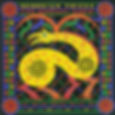GEORGIA: Georgian Voices - The Rustavi Choir
- Danny Wiser
- Dec 30, 2021
- 3 min read
Updated: Apr 10, 2023
An ancient tradition performed with panache, ladles of real human emotion and historical rigour - the ensemble prove why its worth preserving.

Some of the most enchanting music traditions are indeed some of the oldest. Those whose origin story lie shrouded in mystery are bound to fascinate and the case of Georgian polyphony is no different. Widely accepted to predate the introduction of Christianity in Georgia, polyphonic folk chanting is a highly revered tradition not only for its beauty but also for having survived several millennia. Compiled in Tbilisi from original recordings made by Melodiya Records in 1981 and 1989, record label Nonesuch Records sought to emulate the success of Le Mystère des Voix Bulgares by recording what could be sold to the Western world as a male version of the popular Bulgarian State Television Female Vocal Choir. Although perhaps not as well-known as their Bulgarian counterparts, Georgian Voices helped the Rustavi Choir gain critical acclaim and opportunities to feature in some brilliant projects including the Coen brother’s comedic masterpiece The Big Lebowski.
“Alternating from a soothing feel to a frenetic energy, the album provides a real insight into the human condition.”
The choir was created in 1968 by Anzor Erkomaishvili who sadly passed away earlier this year due to COVID-19-related complications. He was born into the remarkable Erkomaishvili musical dynasty that spanned over six generations and was a keen proponent of not only creating beautiful music but of preserving Georgian music culture with an almost academic approach to the task at hand. Thanks to the impact of Erkomaishvili and the rest of the Rustavi Choir’s work, UNESCO now preserve Georgian polyphonic folk chanting on their list of intangible cultural heritage. This is some feat, and yet listening to Georgian Voices it all becomes very clear why Anzor Erkomaishvili chose to dedicate much of his life to it.
The record plays with both rich harmonies and outright dissonance throughout. Most tracks mirror the emotion behind a certain activity and would traditionally be sung as part of that activity. Alternating from a soothing feel to a frenetic energy, the album provides a real insight into the human condition. Uplifting tracks, such as Tshkenosnuri (Riding Song) and Odoya (Work Song) demonstrate a sense of resilience and patience that we as human beings, throughout our existence, have had to learn in order to persevere with challenging journeys whilst maintaining a sense of optimism. With a somewhat similar feeling evoked, Lashgvash (March) marks itself as different due to its position as the first non-acapella track with a gentle instrumentational accompaniment in the background.
Just as there are arduous processes we face that have an end in sight to look forward to, so too are there events which require a softer more mournful approach, when we have less energy to sing loudly and proudly with. The ensemble express this perfectly on Orovela (Plowing Song) a specific solo work song found only in eastern Georgia, as well as on Mirangula (Lament for a Lost Son) and the almost lullaby-esque Sabodisho (Healing Song). The vocals on this album, as one might expect, are something to behold and nowhere is that more obvious than on Chakrulo (Table Song), which begins as it means to go on with some of the most stunning set of tonsils you will hear.
However, these are not the only vocals that will catch one’s attention. Having recently discovered that some parts of the Caucasus have a rather Alpine landscape, another Alpine connection with the region can be found on the album, as yodelling appears on Ali-Pasha (Historical Song), Hasanbegura (Historical Song) and Guruli Naduri (Work Song), a complex working song characteristic of western Georgia. Though it is not a vocal style I have much patience for, it proves vital in helping to create the aforementioned dissonance that makes this record so special. There is something almost spiritual that could be found on parts of the album, and yet, if one is unable to connect that way, they can at least be left in admiration for this graceful group carrying forward the legacy of their ancestors.




